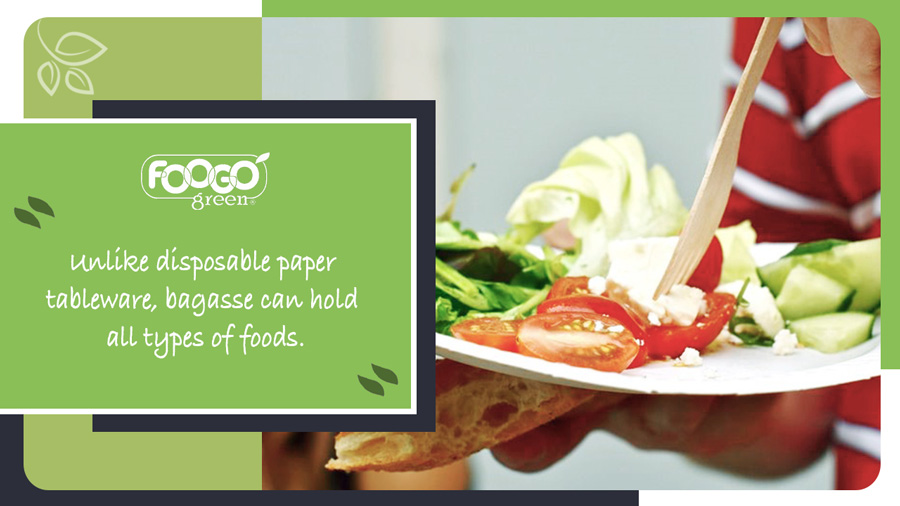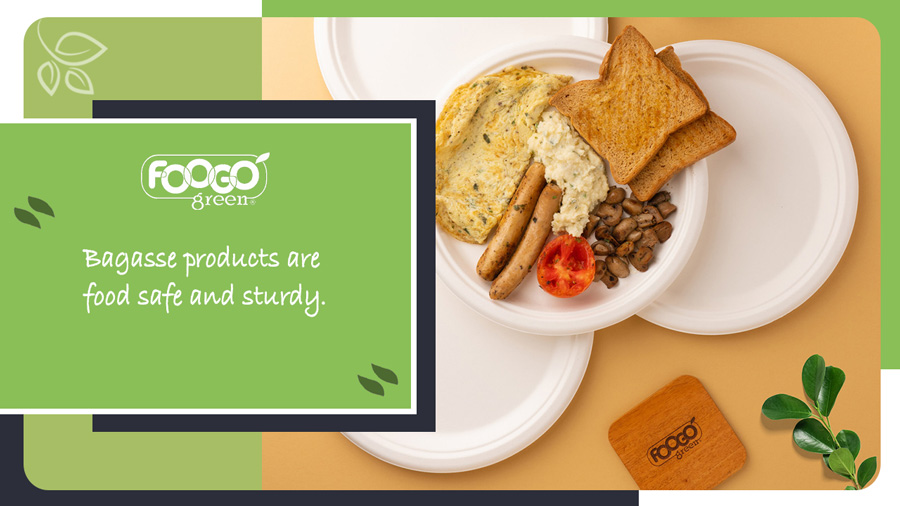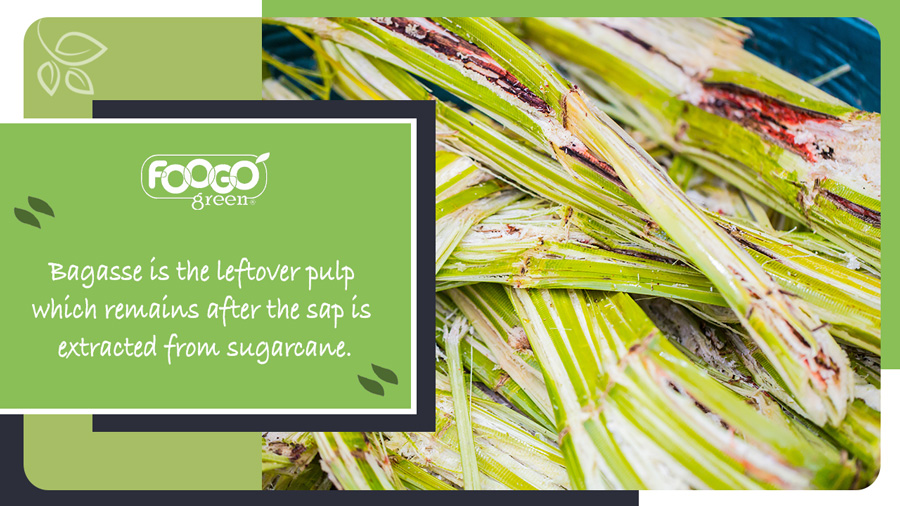What is sugarcane bagasse?
23rd Jun 2023
Bagasse is a natural, fibrous by-product of growing sugarcane. When sugarcane is harvested, it’s crushed to extract the juice. The remaining dry stalks are called bagasse, which loosely translates from the French baggage and Spanish bagazo meaning “refuse” or “rubbish”.
As the name suggests, bagasse is essentially an agricultural waste product: the pulp leftover from the extraction of sugar sap. It makes up roughly a third of the waste produced from sugarcane harvesting.
Bagasse has been tried and tested as an ingredient in livestock feed, and as a source of biofuel for energy generation. It’s also a useful alternative to paper, cardboard, and plastics – which makes it perfect for disposable tableware.

Advantages of using sugarcane bagasse
There are many practical and environmental advantages to replacing plastic and paper dinnerware with bagasse alternatives.
Reliable
Bagasse can withstand various food types, textures, and temperatures and, unlike paper products, can be cleaned and reused multiple times. It’s also microwave-safe and can be stored in a refrigerator without any issues.
Biodegradable
After use, instead of being disposed of in landfill, bagasse products can be naturally composted to provide soil nutrients.
Natural
Many paper products are treated with polyethylene, which is derived from fossil fuels. These harsh chemicals are dangerous to the environment; products can take years to decompose in landfill.
Bagasse products do not contain harmful chemicals or microplastics, making it a food-safe alternative.
Sustainable
Because sugarcane is essentially a form of tall grass, no deforestation or land clearance is required to produce bagasse.
Sugarcane requires minimal cultivation. It generally needs to be planted once or twice in a ten-year period and will grow quickly – it takes as little as six months to mature.
Where land is claimed for production, it tends to be areas previously used for pasture. Mechanisation has also resulted in a reduction in the historic practice of burning before harvesting.

How is bagasse processed?
Once the liquid has been extracted from harvested sugarcane, the remaining fibrous substance can be collected and processed.
During production, the fibres are kept wet. This aids in the removal of remaining pith fibres and any sugar residues that would interfere with the manufacturing process.
The substance is then mixed into a pulp and pressed into shape under high pressure and temperatures.
How to compost bagasse
Bagasse dinnerware is suitable for garden compost. As these products can be dry, make sure you add greenery to the compost pile to give it extra moisture.
It should take 30 to 90 days to compost under ideal conditions, leaving nutrient-rich compost for your soil. To speed up the process, simply cut the dinnerware into small pieces.
You can also take it to an industrial composting facility, where the composting process is accelerated by high temperatures. The composite materials are then sold as soil fertiliser to plant nurseries or farms.
The positive properties of sugarcane bagasse
Sugarcane bagasse shares several characteristics with comparable eco-friendly materials, making it an ideal alternative to disposable paper and plastic tableware.
Just like palm leaf, bagasse is an organic and biodegradable product that is sustainably sourced and does not contribute to deforestation. Both are also the by-product of other industrial processes, which would result in the material otherwise being disposed of as agricultural waste.
The performance of bagasse is comparable to palm leaf when assessing its use in eating utensils. While the two materials may naturally look different, they hold up well to stresses and can either be reused or left to degrade in compost afterwards.

Like bamboo plates and bowls, bagasse tableware is manufactured from a hardy, quick-growing grass, which requires little maintenance and no pesticides.
Its useful component also comes from the stem of the plant. It’s naturally resilient and can be used to produce a range of durable items, including furniture.
Quality disposable and biodegradable bagasse dinnerware
Switching to compostable and biodegradable disposable tableware is an effective way to help reduce the level of plastic landfill and non-biodegradable waste in the environment. That’s why we strive to offer the best quality alternatives to plastic and paper plates, bowls and serving trays.
Our range of sugarcane plates are a perfect complement (or alternative) to palm leaf plates, depending on your preference. While providing a different aesthetic, they still offer the durability and performance you need when catering for others.
We also supply bagasse bowls, which are great for those outdoor events or large-scale celebrations which would otherwise create a lot of unrecyclable waste.
Our products are sustainably sourced and environmentally friendly. You can choose to wash and re-use items, or compost them at home, where they will decompose over the course of a few months.
Looking to cater for larger volumes of people? In addition to our standard pack sizes, we also offer bagasse plates and bowls in larger wholesale volumes.

